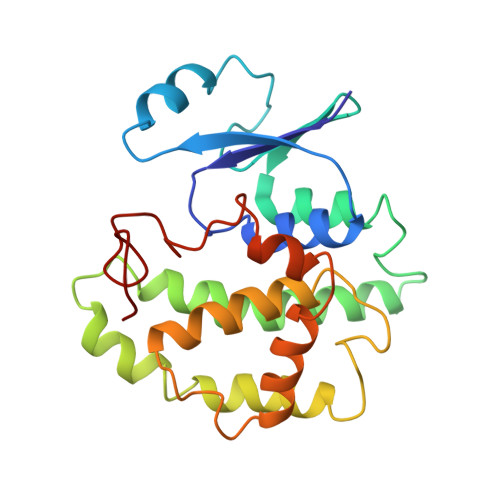Crystal structures of a schistosomal drug and vaccine target: glutathione S-transferase from Schistosoma japonica and its complex with the leading antischistosomal drug praziquantel.
McTigue, M.A., Williams, D.R., Tainer, J.A.(1995) J Mol Biol 246: 21-27
- PubMed: 7853399
- DOI: https://doi.org/10.1006/jmbi.1994.0061
- Primary Citation of Related Structures:
1GTA, 1GTB - PubMed Abstract:
Glutathione S-transferase (GST), an essential detoxification enzyme in parasitic helminths, is a major vaccine target and an attractive drug target against schistosomiasis and other helminthic diseases. Crystal structures of the 26 kDa GST from the helminth Schistosoma japonica (SjGST) have been determined for the unligated enzyme (resolution = 2.4 A, R-factor = 19.7%) and for the enzyme bound to the leading antischistosomal drug praziquantel (resolution = 2.6 A, R-factor = 21.2%). The protein, recombinantly expressed using the Pharamacia PGEX-3X vector for production of GST fusion proteins, contains all 218 residues of SjGST and an additional 13 residues at the C terminus. The structure of unligated SjGST shows that the glutathione binding site pre-exists unchanged in the ligand-free enzyme and is conserved between parasitic and the mammalian class mu enzymes. At therapeutic concentrations the leading antischistosomal drug praziquantel (PZQ) binds one drug per enzyme homodimer in the dimer interface groove adjoining the two catalytic sites. This establishes a protein target for PZQ, identifies the GST non-substrate ligand transport site, and implicates PZQ in steric inhibition of SjGST catalytic and transport for large ligands. Thus, increased expression or mutagenesis of SjGST by the parasite may confer resistance to PZQ. Differences in the xenobiotic binding region between parasitic and mammalian GSTs reveal a distinct substrate repertoire for SjGST and, together with the newly identified PZQ binding site, provide the basis for design of novel antischistosomal drugs. Due to the widespread use expression systems based on SjGST fusions, the atomic structure of SjGST should also provide an important tool for phasing fusion protein structures by molecular replacement.
Organizational Affiliation:
Scripps Research Institute, Department of Molecular Biology-MB4, La Jolla, CA 92037.














